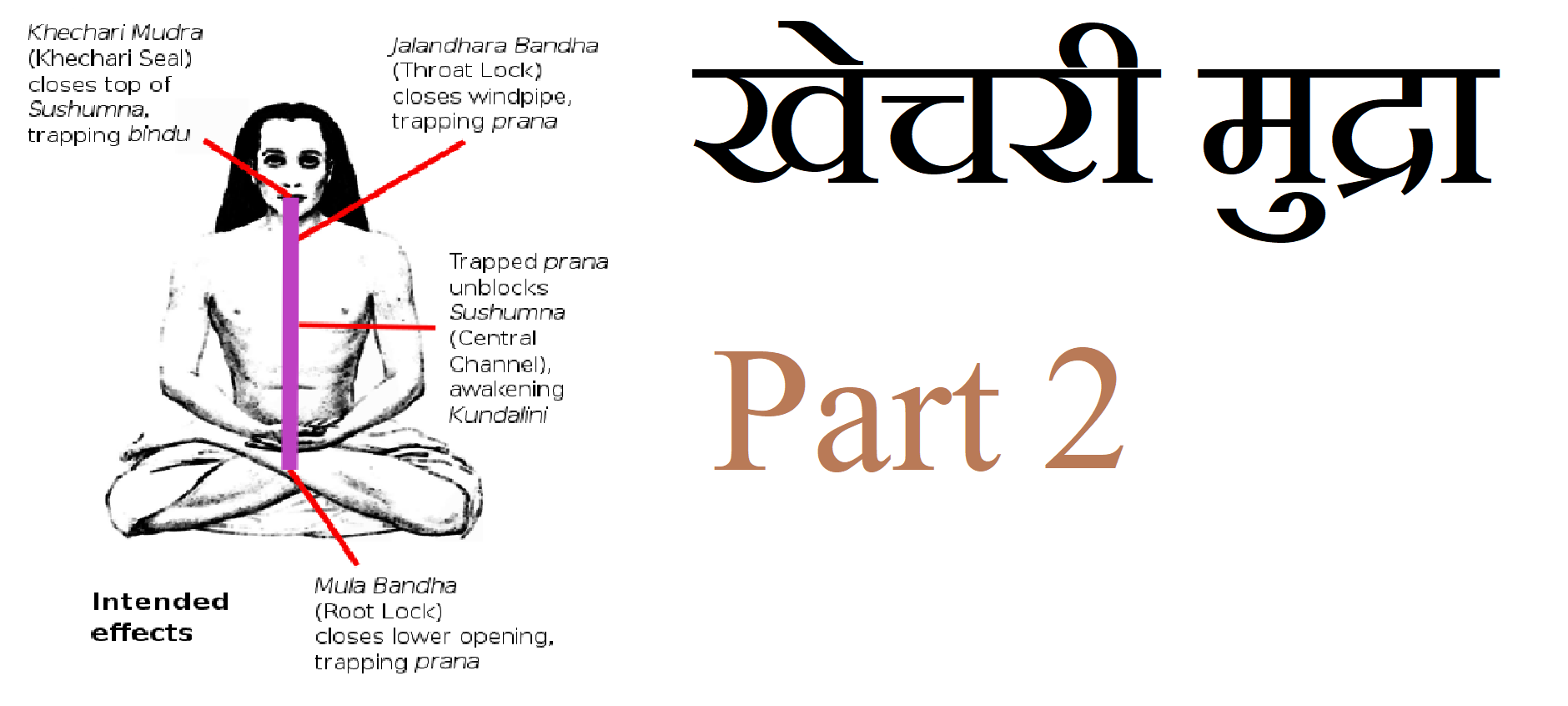In the previous article, we have described the basics of Khechari mudra & its benefits. In this article, we’ll learn more about this mysterious mudra and its working principles.
Besides all the allegorical praise that we offered in reverence to Khechari mudra previously, it is a highly important technique for the practice of the more developed stages in Yoga and thus must be learned.
Now, different manuals of Hatha Yoga texts have advised specific instructions before carrying out this mudra. Their practices vary slightly. We have enlisted each of them in bullet points to give the reader a diverse idea (see below).
Instructions
- In most of the practices of Yoga, wherever he / she may be, it is advised to always keep tongue turned upwards (towards the soft palate), and restrain the breath. This is called Nabho mudra. It is to be perfected before attempting the complex version, i.e. Khechari mudra.
- For perfection in Khechari mudra, the tongue is lengthened by cutting the fraenum linguae, moving, and pulling it. When it can touch the space between the eyebrows, then Khecari can be accomplished. There are two ways to achieve –
1st Way
Taking a sharp, smooth, and clean instrument, of the shape of a cactus leaf, the frenulum of tongue should be cut a little (as much as a hair’s thickness), at a time. Then rock salt and yellow myrobalan (both powdered) should be rubbed in. On the 7th day, it should again be cut a hair’s breadth. One should go on doing thus, regularly for six months. At the end of six months, the fraenum of the tongue will be completely cut [2].
2nd Way
Cut the lower tendon of the tongue, and move the tongue constantly. Rub it with fresh butter, and draw it out (to lengthen it) with an iron instrument. By practicing this always, the tongue becomes long [3].

Procedure
There are two slightly varying approaches to perform this mudra –
1st method
Practice turning the tip of the tongue upwards and backwards so as to touch the palate, till at length it reaches the holes of the nostrils opening into the mouth. Close those holes with the tongue (thus stopping inspiration), and fix the gaze on the space between the eyebrows. When the tongue reaches the space between the eyebrows, then the Khechari is accomplished [3].
2nd method
The wise Yogi, sitting in Vajrasana posture, in a place free from all disturbance, should firmly fix his gaze on the spot in the middle of the two eyebrows; and reversing the tongue backwards fix it in the hollow under the epiglottis, placing it with great care on the mouth of the well of nectar (i.e. closing up the air passage) [4].
Warnings
- Raja Yoga does not encourage cutting the frenulum beneath the tongue. Using tongue exercises, Jivha shodhana (tongue dhauti), Talavya kriya; it can be lengthened naturally.
- As a beginner, you can seal the tongue against the roof of the mouth without turning it back and that is sufficient for initial stages [1].
- There are easier alternatives to Khechari mudra. Nabho mudra and Manduki mudra (Frog mudra) are two of them.
- These mudras should be kept secret by every means, as one keeps one’s box of jewellery, and should on no account be told to anyone, just as husband and wife keep their dealings secret [2].
- This mudra needs an expert practitioner’s guidance. Do not attempt on your own. There is a serious risk of injury involved. Kindly read our disclaimer.
References
- Book: Hatha Yoga – The report of a personal experience, by Theos Bernard
- Book: Hatha Yoga Pradipika, written by Swami Swatmarama & translated by Pancham Sinh
- Book: Gheranda Samhita – A treatise on Hatha Yoga, translated by Sris Chandra Vasu
- Book: The Siva Samhita, translated by Rai Bahadur Srisa Chandra Vidyarnava
- Book: Awakening the Mind: A Guide to Harnessing the Power of Your Brainwaves, by Anna Wise

5 thoughts on “Khecarī mudrā – Instructions, Procedure & Warnings”